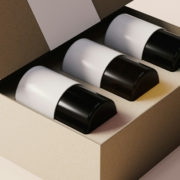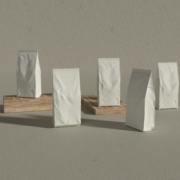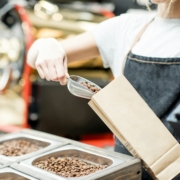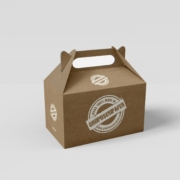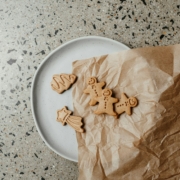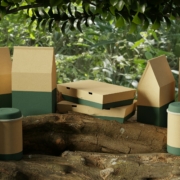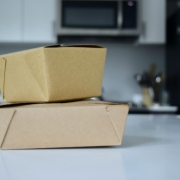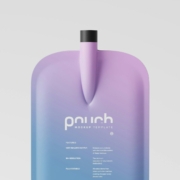Troubleshooting Common Custom Cylinder Storage Issues
It’s easy to overlook packaging until things start going wrong. Bent boxes, collapsed displays, products that lose their shape from inadequate support, they’re the kind of issues that sneak up, especially when scaling a small business. If your products are stored in custom cylinders, you already know they offer more than just good looks. They protect items, strengthen shelf appeal, and help tie together a brand’s identity. But even the best-designed cylinder can become a headache if it’s stored poorly or mishandled between production and delivery.
From food jars to skincare tubes, coffee beans to rolled posters, the shape of custom cylinders suits a lot of uses. They’re neat, stackable, and stand out. But keeping them in good condition from factory to fulfilment is trickier than many realise.
Without the right environment or storage plan, even premium packaging starts to lose its edge, literally and figuratively. Identifying weak spots in your storage approach is the first step to keeping your packaging professional-looking right up to the customer’s hands.
Identifying Common Custom Cylinder Storage Issues
No matter how solid they feel at first, custom cylinders can run into trouble if you’re not paying attention to how and where they’re stored. Most problems stem from three things: poor space management, rough handling, and environmental wear.
One issue small business owners talk about often is wasted storage space. Cylinder packaging takes up more room than flat or folding options, so tossing them on shelving meant for cartons doesn’t always work. This often leads to overstacking or placing them in awkward positions that weaken the shape. And once a cylinder loses its firm edge, contents start shifting inside or the lid doesn’t seal properly.
Another big warning sign is when cylinders start looking dented or warped even before they’ve been used. This usually comes down to a combination of physical pressure and changes in humidity or temperature. Places like warehouses, kitchens, or market stalls can all create conditions that push packaging past its limits. For example, leaving cylinders near windows or heaters might dry out the adhesive or cause printed colours to fade quicker than expected.
Here’s a breakdown of what to watch for:
- Cylinders leaning or collapsing under their own weight when stacked too high
- Tops popping off from external pressure or internal bulging
- Moisture causing softening, bubbling, or peeling of printed lamination
- Warping from rapid temperature changes or sun exposure
- Dust settling inside if lids aren’t tightly sealed during storage
Most of these issues might not start out major, but they can grow fast, especially if you’re prepping large orders for retail, markets, or fulfilment hubs. Fixing the damage late in the game also means time delays and higher costs. Getting ahead of these problems with a clear plan makes a huge difference.
Effective Storage Solutions For Custom Cylinders
Making your storage work better doesn’t have to mean a full reshuffle of your entire setup. Often, it’s a few small tweaks that go a long way. The goal is to protect the shape, finish, and functionality of each container while optimising space so you’re not wasting room or digging through boxes.
Start by looking at your shelving. Cylinders are best stored upright where possible. That helps prevent side denting and warping, especially if the packaging includes luxury finishes like foil stamping or embossed labels. Avoid laying them flat, unless they’ve been specifically designed to resist rolling or crushing.
Next, think about the materials around your cylinders. Bubble wrap or cardboard inserts between rows can stop scratch marks and surface wear. If your kitchens or packing zone deal with steam, make sure everything is stored well above floor level and away from vents. Choosing a climate-stable space, even a simple cupboard or dry storeroom, helps keep the finish intact.
Here are a few extra steps that make your cylinder storage smarter:
- Group cylinders by size and design for easier access and faster packing
- Use stackable crates or dividers to keep cylinders upright and separated
- Store with lids facing up to avoid dislodging seals
- Add date-marked inventory tags so older stock gets used first
- Rotate stock every month to prevent long-term pressure damage
If it already feels like you’re juggling too many moving parts, you’re not alone. As businesses grow and orders get bigger, these storage habits help smooth some of the stress. They also set the stage for better flow when it’s time to prep shipments, restock shelves, or display products. Taking time now to build a smarter system saves headaches when deadlines hit.
Importance of Proper Labelling and Inventory Management
Effective labelling and a well-organised inventory system can act like a superhero duo for packaging management. They not only keep the storage chaos at bay but also ensure accuracy in order fulfilment. Clearly labelled cylinders spare you the trouble of mix-ups. No more scrambling through stacks to find the right size or design. Each label acts as a little roadmap, leading you straight to what you need.
Consider colour-coded labels based on product type or urgency. This simple trick can save heaps of time during busy seasons. For example, food products might have a green label, while limited edition items could be red. It’s all about making retrieval as effortless as possible. Your system also benefits from keeping tabs on stock rotation. Regular checks on cylinder conditions help identify issues before they escalate.
Here’s how good inventory management pays off:
- Prevents over-ordering, freeing up space for more popular items
- Helps track cylinder usage for better forecasting
- Ensures any environmental wear is caught early
- Facilitates smoother packing processes by knowing what’s available at a glance
Keeping your inventory in order doesn’t have to be overwhelming. With the right process, you can maintain a streamlined workflow that saves time and reduces waste.
Partnering With a Reliable Packaging Provider
Having a go-to partner for your packaging needs turns potential headaches into smoothly managed operations. They offer guidance and solutions tailored to your specific concerns, whether it’s space management or material strength. A reliable provider also stays ahead of packaging improvements, ensuring you’re not missing out on updated materials or smarter designs.
Choosing the right partner can prevent storage challenges by:
- Offering custom solutions that fit snugly within your available space
- Providing expert advice on material durability and environmental resistance
- Ensuring consistent quality control to avoid defects
- Supporting you during busy periods with scalable solutions
Trust isn’t built overnight, but when you establish a solid partnership, it means less stress and more time focused on business growth. Make sure your packaging provider understands the unique needs of your industry and is committed to long-term support.
Growing Together With Professional Solutions
Good packaging does more than protect products. It tells your brand story and reflects what you care about. Investing in custom solutions that meet your specific needs can improve how people experience your brand. This level of detail not only keeps products intact but also adds to your presence on the shelf or in a customer’s hand.
By refining your storage and inventory practices, you’re laying the groundwork for smoother growth. Addressing common issues early and teaming up with the right partners leaves your business well-prepared for expansion. Packaging should work for you, not against you, and should support both function and brand presentation consistently.
Working with professional packaging experts ensures your business keeps forward momentum, no matter how busy things get. The right help today means better results tomorrow. Every improvement made now sets the stage for stronger performance, smoother operations, and a packaging setup that grows right along with your business.
Elevate your brand’s image and ensure flawless product presentation with our expert solutions for cylinder packaging. Star Stuff Group is here to help you maintain the integrity and allure of your packaging, from production to delivery. With customised approaches and a keen eye on quality, our team is dedicated to supporting your business’s growth and brand consistency. Experience the seamless fusion of functionality and style with our tailored packaging options today.

